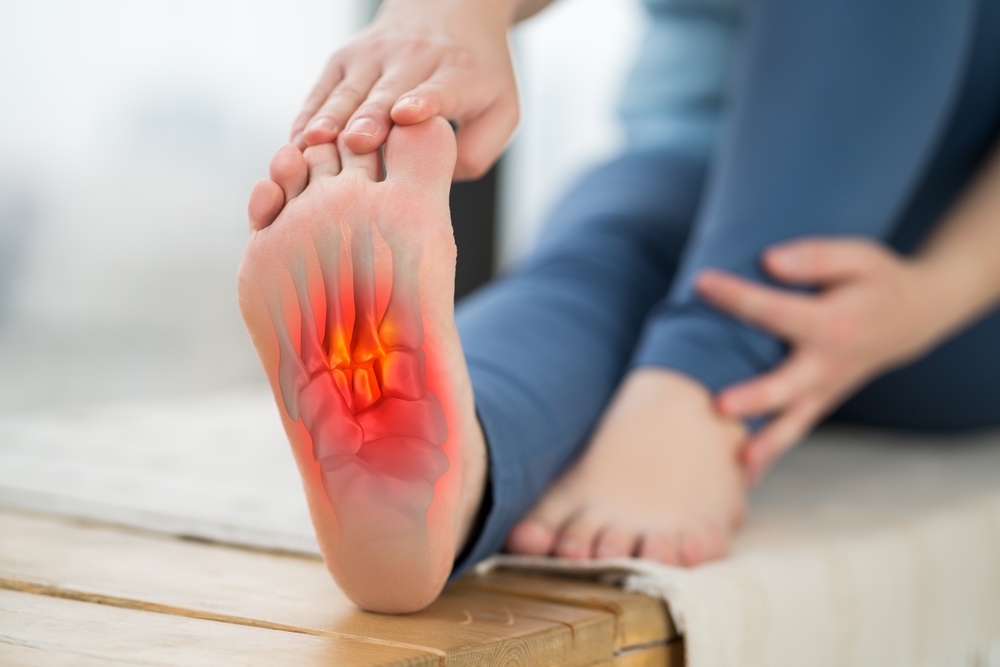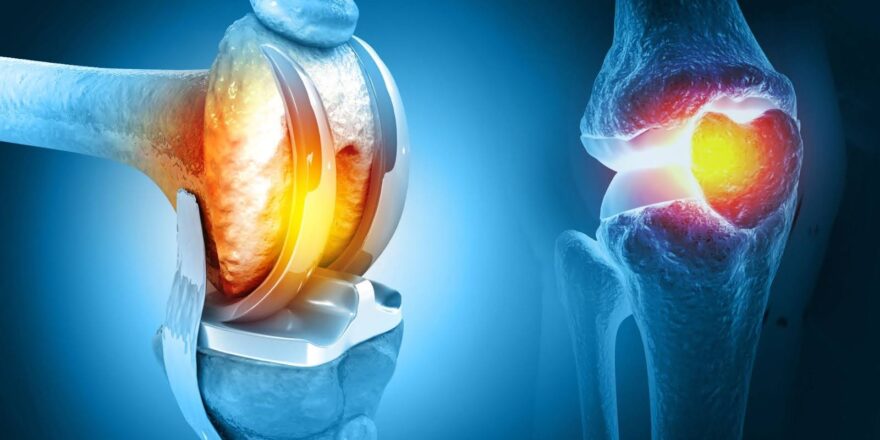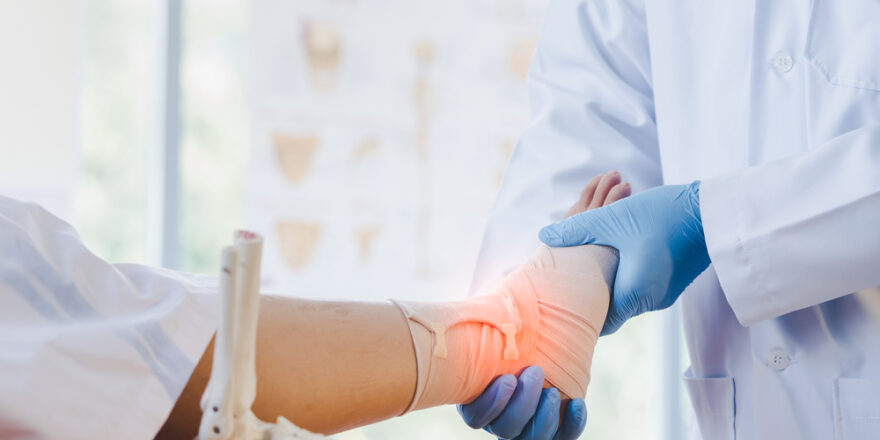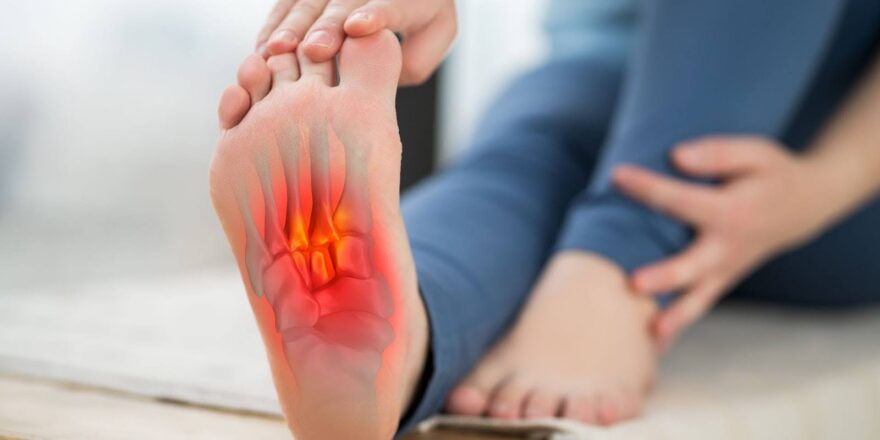Foot pain is quite a common issue that can affect people of all ages and lifestyles. While occasional foot discomfort is normal, continuous or severe foot pain may be a signal of a serious problem that requires medical attention from foot and ankle orthopedic surgeons. Understanding the common causes of foot pain and knowing when to see a doctor is crucial for maintaining foot health and overall well-being.
Understanding Foot Anatomy
Before getting into the causes of foot pain, it’s essential to understand the complexity of the foot’s anatomy. The foot comprises bones, muscles, tendons, ligaments, and nerves, all working together to support body weight, facilitate movement, and maintain balance.
Any disruption or dysfunction within these foot structures can lead to foot trouble and pain. In such scenarios, consider booking an appointment with the best orthopedic doctor near me and taking the necessary diagnosis, precautions, and treatment options.
Common causes of foot pain
#1. Plantar Fasciitis
Being one of the most fundamental reasons behind heel pain, Plantar Fasciitis happens when the plantar fascia, a thick band of tissue that runs along the bottom of the foot, starts getting irritated for some reason. Some of the symptoms include sharp pain in the heel, especially upon waking or after prolonged periods of rest.
#2. Achilles Tendonitis
Achilles tendonitis happens because of the body’s defense response to the Achilles tendon, which connects the calf muscles to the heel bone. It typically occurs due to repetitive stress or overuse, such as excessive running or jumping activities. Some common symptoms of Achilles tendonitis include pain and stiffness in the back of the heel during physical activity.
#3. Morton’s Neuroma
Morton’s neuroma is a painful condition that affects the ball of the foot, preferably between the third and fourth toes. It occurs when the tissue surrounding a nerve thickens, causing sharp, burning pain and the sensation of walking on a pebble or marble. According to foot and ankle orthopedic surgeons, tight shoes, high heels, or foot deformities can increase pain and trouble in Morton’s neuroma.
#4. Bunions
Bunions are bony bumps that form at the base of the big toe, often causing pain, swelling, and stiffness in the foot. They develop when the big toe pushes against the adjacent toe, forcing the joint of the big toe to enlarge and stick out. Bunions can even happen from genetics, improper footwear, or other foot deformities.
#5. Stress Fractures
These fractures are actually tiny cracks that happen typically in the bones of the foot because of overuse or continuous repetitive force in the area. These fractures commonly happen in athletes or individuals who engage in high-impact activities without proper conditioning or footwear.
Some of the common symptoms of stress fractures are localized pain, swelling, and tenderness, which worsen with further activity. The specialists at the best orthopedic hospital in Abu Dhabi recommend taking more rest in such scenarios.
When do you need to find an ortho doctor near me?
While minor foot pain may go away with rest, ice, and over-the-counter pain relievers, certain symptoms definitely need prompt medical attention. It’s essential to consult the best orthopedic doctor near you if you experience any of the following:
#1. Repeated pain
If foot pain persists for more than a few days even after trying home remedies and rest, it’s advisable to seek medical treatment options. Persistent pain may signal a more serious condition that requires professional diagnosis and care.
#2. Severe Pain
Avoid ignoring severe foot pain during your day-to-day lifestyle, as it may worsen the condition and extend recovery. If the pain is intense and interferes with daily activities or mobility, it’s better to visit a doctor at the foot clinic immediately.
#3. Swelling or redness
Swelling, redness, or warmth in the foot are some signs of inflammation, infection, or injury. These symptoms may happen with various foot conditions, including fractures, infections, or arthritis. A quick evaluation by a medical professional is necessary to determine the actual cause and begin appropriate treatment.
#4. Difficulty Walking
If foot pain makes it difficult to handle weight or walk normally, it may indicate a serious foot problem or injury. Avoiding weight-bearing activities and seeking medical attention can prevent further damage and promote speedy healing.
#5. Numbness or Tingling
Numbness, tingling, or loss of sensation in the foot can signal nerve compression or damage. These symptoms may indicate certain conditions like peripheral neuropathy, nerve entrapment, or circulation problems, requiring you to consult a foot and ankle orthopedic surgeon for proper diagnosis and management.
Contact Tarmeem for Accurate Diagnosis and Treatment of Common Foot Pain Causes
Tarmeem Orthopedic and Spine Specialty Hospital in Abu Dhabi is your go-to center for foot pain and other orthopedic conditions. With a multidisciplinary team of orthopedic specialists and advanced diagnostic facilities, Tarmeem Hospital is well-equipped and committed to addressing foot pain comprehensively.
At Tarmeem, find the best orthopedic doctor near me whose diagnosis process begins with a thorough examination of the patient’s medical history and symptoms. In cases of foot pain, this may require assessing factors such as the location, intensity, and duration of the pain, as well as any other factors such as prior injuries or medical conditions.
Following the initial assessment, advanced imaging techniques such as X-rays, MRIs, or CT scans may be required to obtain detailed insights into the actual cause of the pain, whether it be due to fractures, ligament injuries, arthritis, or other conditions affecting the foot and ankle. Our doctors will examine your foot pain and recommend the best treatment and precautions to get prompt and maximum relief.For more information on foot pain or to book an appointment with a foot and ankle orthopedic surgeon, visit our website or contact us right away.




